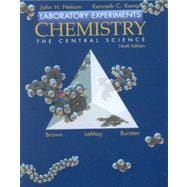| Preface | ix | ||||
| To the Student | xi | ||||
| Laboratory Safety and Work Instructions | xiii | ||||
|
1 | (16) | |||
|
17 | (12) | |||
|
29 | (8) | |||
|
37 | (10) | |||
|
47 | (12) | |||
|
59 | (8) | |||
|
67 | (10) | |||
|
77 | (10) | |||
|
87 | (10) | |||
|
97 | (10) | |||
|
107 | (16) | |||
|
123 | (14) | |||
|
137 | (12) | |||
|
149 | (10) | |||
|
159 | (10) | |||
|
169 | (6) | |||
|
175 | (14) | |||
|
189 | (14) | |||
|
203 | (12) | |||
|
215 | (12) | |||
|
227 | (10) | |||
|
237 | (16) | |||
|
253 | (16) | |||
|
269 | (18) | |||
|
287 | (12) | |||
|
299 | (12) | |||
|
311 | (14) | |||
|
325 | (14) | |||
|
339 | (20) | |||
|
359 | (44) | |||
|
362 | (3) | |||
|
365 | (5) | |||
|
370 | (4) | |||
|
374 | (3) | |||
|
377 | (9) | |||
|
386 | (17) | |||
|
403 | (10) | |||
|
413 | (10) | |||
|
423 | (12) | |||
|
435 | (10) | |||
|
445 | (8) | |||
|
453 | (6) | |||
|
459 | (10) | |||
|
469 | (12) | |||
|
481 | (6) | |||
|
487 | (8) | |||
|
495 | ||||
| Appendices | 1 | (2) | |||
|
3 | (9) | |||
|
12 | (4) | |||
|
16 | (2) | |||
|
18 | (1) | |||
|
19 | (1) | |||
|
20 | (1) | |||
|
21 | (2) | |||
|
23 | (7) | |||
|
30 | (2) | |||
|
32 | (21) | |||
|
53 | (1) | |||
|
54 | (1) | |||
|
55 | (1) | |||
|
56 | (1) | |||
|
57 |








